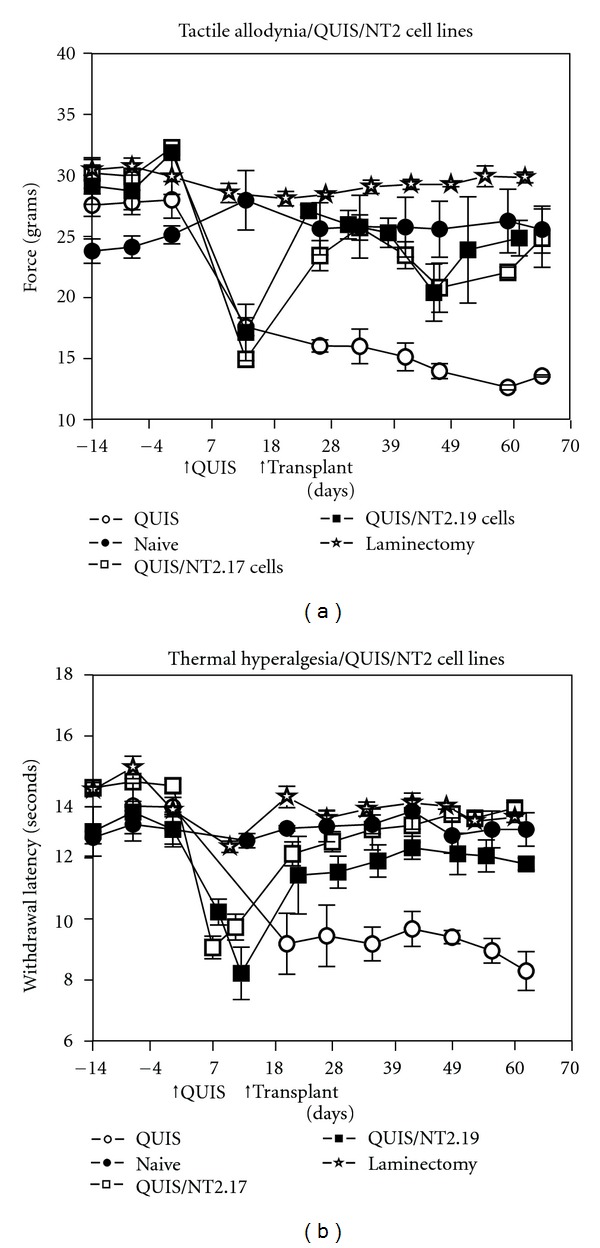Figure 7.

Comparison of sensory recovery after transplant of hNT2.17 or hNT2.19 cell lines in the same QUIS model of SCI. Rats were spinally injected with QUIS in a rat model of SCI and chronic pain. All animals in the study received CsA (10 mg/Kg) 1 day before and for 13 days after the two week time-point when some animals were injected with either the hNT2.17 or hNT2.19 cells. Animals were either left untreated (naïve), injected with QUIS alone or laminectomy only or QUIS plus hNT2.17 or hNT2.19 cells (106 cells/injection) into the lumbar subarachnoid space at two weeks after QUIS. Animals were tested before the SCI (baseline) and once a week following QUIS and treatments for hypersensitivity to tactile (a) or thermal (b) stimuli in hindpaws below the SCI. QUIS injury negatively affected hindpaw responses bilaterally, but the ipsilateral hindpaw is most affected by the injection of quisqualic acid (shown here). Neither hindpaw recovers normal tactile or thermal responses after QUIS alone by 60 days after the injection. Both ipsilateral and contralateral hindpaws recovered near-normal sensory responses to tactile and thermal stimuli after grafting the GABAergic hNT2.17 or serotonergic hNT2.19, compared to the QUIS injury alone. Data represent the mean value ± SEM (n = 4–6 animals in each group) at each time point before and 63 days after QUIS.
